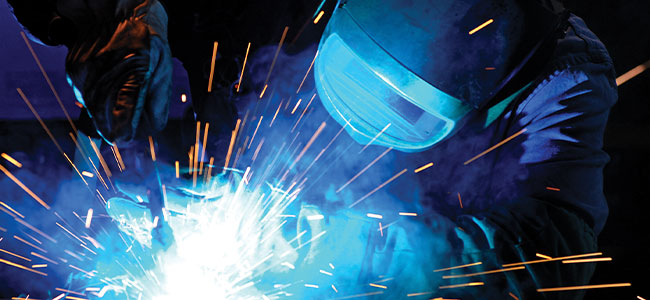Breathing Easy: Top 10 Welding Fume Collection Considerations
Implementing effective welding fume control ensures employee health and compliance with regulatory standards.
Have you ever visited a smoky, air-polluted welding shop? Or, worse yet, worked in one? Welding and cutting activities produce harmful fumes and particles from manual and robotic welding, arc gouging, plasma cutting and laser cutting. These fumes not only pollute the shops and lower indoor air quality, but they also endanger the health and safety of workers.
Reducing exposure to hazardous metalworking fumes, which consist of many different sizes of airborne dust particles, is most effectively achieved by incorporating dust collection systems equipped with high-efficiency primary cartridge-style filters. Certain types of particulates may even require secondary safety filters.
Here are ten important considerations to address when developing and executing a welding fume control program.
1. Employee Health
Ultimately, the main goal of any weld smoke and particulate collector is to maintain good workplace air quality for employees. Workers have a right to clean air, and an employer is legally and ethically responsible for doing all that is needed to keep employees healthy. Removing particulate and fumes from the welding shop helps to maintain better workplace morale and enables employees to enjoy longer and healthier careers. Air quality affects more than weld shop workers because employees in surrounding areas of the facility can also suffer from the overflow of fumes.
2. OSHA and EPA Regulations
For welding shops that recirculate the air cleaned by a dust collection system into the workspace, the reintroduced air must stay below OSHA permissible exposure limit (PEL) thresholds for metal contaminants generated by welding processes. Shops that exhaust the air outdoors are subject to EPA emission requirements.
OSHA has established PELs based on an eight-hour time-weighted average (TWA) for hundreds of dusts, including metals contained in welding fumes. They are listed in OHSA’s annotated PEL tables. The OSHA PEL requirements will determine the minimum level of filtration efficiency that a fume collector should achieve. However, even when a facility meets the PELs for its metals, some workers may still suffer from health problems caused by fumes. In this case, operators may have to lower the exposure limits further to protect the air quality and health of all employees.
In 2008, the EPA introduced the National Emission Standards for Hazardous Air Pollutants (NESHAP) Rule 6X as part of the Clean Air Act for metal finishing hazardous air pollutants (MFHAPs). The EPA created these standards to reduce exposures to hazardous air pollutants (HAPs), including materials that contain 1.0 percent by weight manganese, or 0.1 percent by weight cadmium, chromium, lead, or nickel.
This article originally appeared in the February/March 2024 issue of Occupational Health & Safety.

